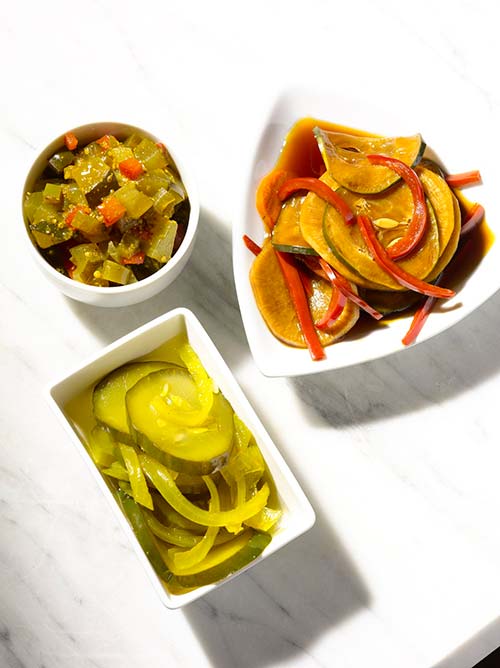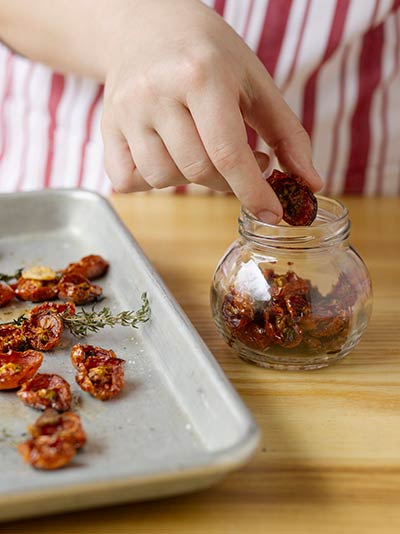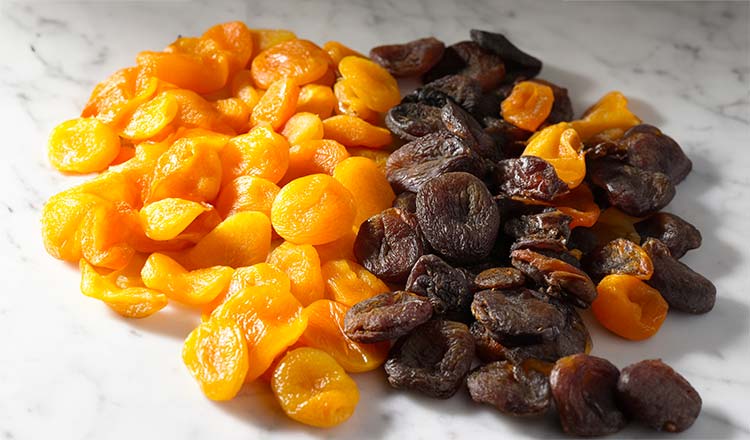Every year, we try to avoid it, but it is inevitable: summer will end eventually—though luckily, only temporarily.
Summer produce doesn’t leave quietly, and in its waning weeks, our gardens and farm stands explode with cucumbers, tomatoes, summer squash, eggplants! The mountains of produce are daunting, but irresistible, since in only a month, we’ll be knee deep in apple season and dreaming of one last tomato and cucumber salad.
Of course, the Achilles’ heel of our summer produce obsession is time, which is not kind to the tender fruits and veggies that pile up on our kitchen counters. Fortunately, our great-great-great-etc.-parents already figured this out, and though we live in the 21st century, our best options for preserving our favorite ingredients are firmly rooted in the past.
Though we are huge fans of canning and all its related long-term preservation techniques, those are rather technical, requiring special equipment, ardent safety routines, and plenty of research. For convenient and fool-proof, albeit sometimes with a shorter shelf-life, storage of summer fruits and vegetables, we look to two basic techniques: quick-pickling and drying.

Quick-pickling is an easy alternative to fermented and pressure-canned pickles. You can quick-pickle anything, from classic cucumbers and onions to tomatoes and even peaches. The ingredient is submerged in a 1:1 mixture of water and vinegar (like white, cider, red, or rice), and seasoned however you like. Add about 1 tablespoon of salt for every 2 cups of liquid, and then you can flavor the mix by adding ingredients like peeled garlic cloves, ginger root, dried or fresh chiles, whole spices (ground leaves an unpleasant texture), cilantro or dill stems, sugar, honey. The list is virtually endless, but always on hand in my fridge? Pickled red onions with sliced habaneros and dry oregano.
Pour your mixture over your ingredient, which can be whole for small produce like green beans or grapes, or in wedges or slices, like for beets, cauliflower florets, or carrot sticks. Cover and refrigerate for at least 24 hours, but then up to 2 months. Enjoy pickled cucumbers, green beans, or okra as a snack, or use the pickles in any dish for a briny, acidic note. Sauté pickled tomatoes for an easy pasta dish or blend pickled peppers for a tangy and spicy sandwich topping. Reserve the leftover brine for vinaigrettes or other pickles.

Drying produce, most commonly fruit, removes the water from an ingredient, which is the main culprit in spoilage. Dried fruits can be held at room temperature for up to a year, which means you can snack on dried tomatoes, grapes, peaches, plums all winter. You can dry halved, quartered, or sliced fruit, though the smaller the pieces, the more efficiently they will dry, leading to better storage.
To dry fruit in the oven, lay the pieces on a parchment-lined baking sheet and bake at 200°F with the door ajar until the fruits are shriveled, chewy, and dry to the touch. Depending on the fruit, it can take anywhere from 4 to 8 hours. Cool the fruit completely before storing in air-tight containers or zip-top bags. Discard the dried fruit if mold or moisture appears, or if they begin to smell “off” or rancid.
Eat your fruit as they are or dipped in dark chocolate for a light and sweet treat. Though dried fruit makes for a great lunchbox or hike snack, they can also be added to plenty of savory dishes, like tagines, pastas, and salads for a burst of summery sweetness.


